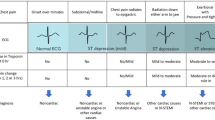Abstract
Background: The benefit of tissue plasminogen activator (t-PA) is strongly associated with the time to treatment. In Bavaria, Germany, only half of the population has the opportunity to be transferred to 1 of the 19 stroke units within the critical time window of less than 3 hours. The aim of this study was to investigate the benefit of a new stroke-code-box for t-PA thrombolysis combined with a telemedicine network system to increase the use of acute stroke thrombolysis.
Methods: Two specialized stroke centers in Germany established a 24-hour telemedicine network (Telemedicine Pilot Project of an Integrated Stroke Care [TEMPiS]) to advise 12 community hospitals in eastern Bavaria. These clinics are linked via telemedicine in a 24-hour/7-day service network that allows patients to be examined by experts via a video-conference system Additionally, a special stroke-code-box for acute t-PA thrombolysis was designed to reduce time in the application and documentation process.
Results: In the 12-month period before implementation of the TEMPiS network system, 10 patients had received systemic thrombolysis. In our 6-month study period (from July to December 2003) and after implementation of a stroke-code-box for t-PA thrombolysis within the telestroke network, 164 patients with acute stroke were presented with t-PA treatment indications. Of this patient population, 27.4% (45 of 164) received t-PA.
Conclusions: Stroke care, including t-PA thrombolysis in non-urban areas, is feasible using a modern stroke unit concept within a telestroke network. With the expertise of specialized stroke centers accessed via telemedicine and the design of a stroke-code-box for t-PA thrombolysis, nearly one-third of patients presented with a possible indication for systemic thrombolysis can be treated with t-PA, thereby increasing the options for a successful stroke treatment.
Similar content being viewed by others
References
Gage BF. Adverse outcomes and predictors of underuse of antithrombotic therapy in medicare beneficiaries with chronic atrial fibrillation. Stroke 2000;31:822–827.
Adams H, Brott T, Furlan A. Guidelines for thrombolytic therapy for acute stroke: a supplement to the guidelines for the management of patients with acute ischemic stroke. Stroke 1996;27:1711–1718.
The National Institute of Neurological Disorders and Stroke TPA Stroke Study Group. Tissue plasminogen activator for acute ischemic stroke. N Engl J Med 1995;333:1581–1587.
Albers GW. Advances in intravenous thrombolytic therapy for treatment of acute stroke. Neurology 2001;57:77–81.
Levine SR, Gorman M. Telestroke: the application of telemedicine for stroke. Stroke 1999;30:464–469.
Wang S, Lee SB, Pardue C, et al. Remote evaluation of acute ischemic stroke; reliability of National Institutes of Health Stroke Scale via telestroke. Stroke 2003;34:188–192.
Johnston KC, Worrall BB. Teleradiology assessment of computerized tomographs online reliability study (TRACTORS) for acute stroke evaluation. Telemed J e-Health 2003;9:227–233.
Reponen J. Initial experience with a wireless personal digital assistant as a teleradiology terminal for reporting emergency computerized tomography scans. J Telemed Telecare 2000;6:45–49.
Handschu R, Littmann R, Reulbach U, et al. Telemedicine in emergency evaluation of acute stroke. Interrater agreement in remote video examination with a novel multimedia system. Stroke 2003;34:2842–2846.
Shafqat S, Kvedar JC, Guanci MM, Chang Y, Schwamm LH. Role for telemedicine in acute stroke. Feasibility and reliability of remote administration of the NIH stroke scale. Stroke 1999;30(10):2141–2145.
Wiborg A, Widder B, for the TESS Study Group. Teleneurology to improve stroke care in rural areas. The telemedicine in stroke in swabia (TESS) project. Stroke 2003;34:2957–2963.
Alberts MJ, Hademenos G, Latchaw RE, et al. Recommendations for the establishment of primary stroke centers. JAMA 2000;283:3102–3109.
Audebert HJ, Kukla C, V. Clarenau St., et al. Telemedicine for safe and extended use of thrombolysis in stroke. Stroke 2005;36(2):287–291.
Chodroff PH. A three-year review of telemedicine at the community level clinical and fiscal results. J Telemed Telecare 1999;5:28–30.
LaMonte MP, Bahouth M, Hu P, et al. Telemedicine for acute stroke. Triumphs and Pitfalls. Stroke 2003;34:725–728.
Graham GD. Tissue plasminogen activator for acute ischemic stroke in clinical practice. A meta-analysis of safety data. Stroke 2003;34:2847–2850.
Katzan IL, Furlan AJ, Lloyd LE, et al. Use of tissue-type plasminogen activator for acute ischemic stroke: the Cleveland area experience. JAMA 2000;283:1151–1158.
NINDS Symposium. Setting new directions for stroke care: rapid identification and treatment of stroke. Washington, D.C., December 12–13, 1996.
Sillimann SL, Quinn B, Huggett V, Merino JG. Use of a field-to stroke center helicopter transport program to extend thrombolytic therapy to rural residents. Stroke 2003;34:729–733.
Grotta J. Acute hospital care: resource utilisation. In: Marler J, Jones P, Emr M, eds. Proceedings of a National Symposium on Rapid Identification and Treatment of Acute Stroke. Arlington, Virginia: National Institute of Neurological Disorders and Stroke 1997, pp. 87–89.
Heuschmann PU, Berger K, Misselwitz B, et al. Frequency of thrombolytic therapy in patients with acute ischemic stroke and risk of in-hospital mortality: the German Stroke Registers Study Group. Stroke 2003;34:1099–1110.
Goldstein L. North Carolina stroke prevention and treatment facilities survey. Stroke 2000;31:66–70.
Katzan IL, Hammer MD, Furlan AJ, Hixson ED, Nadzam DM, for the Cleveland Clinic Health System Stroke Quality Improvement Team. Quality improvement and tissue-type plasminogen activator for acute ischemic stroke: a Cleveland update. Stroke 2003;34:799,800.
Author information
Authors and Affiliations
Corresponding author
Rights and permissions
About this article
Cite this article
Ickenstein, G.W., Horn, M., Schenkel, J. et al. The use of telemedicine in combination with a new stroke-code-box significantly increases t-PA use in rural communities. Neurocrit Care 3, 27–32 (2005). https://doi.org/10.1385/NCC:3:1:027
Issue Date:
DOI: https://doi.org/10.1385/NCC:3:1:027




